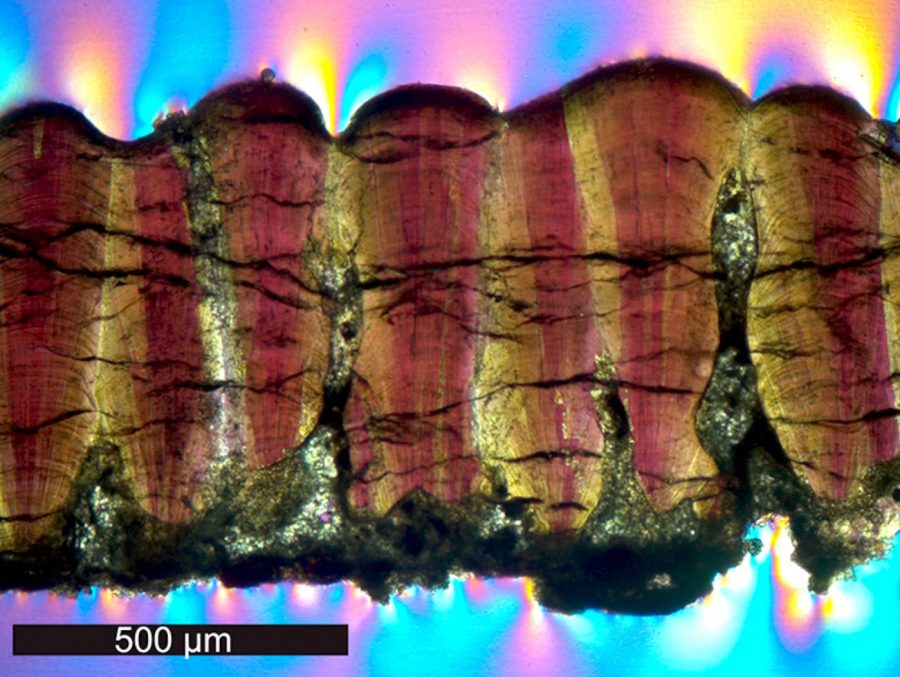Studies Reveal Dinosaurs Were Warm-Blooded
Scientists Make a New Discovery About Dinosaurs and Their Blood
Cross-section of a dinosaur eggshell fossil under a microscope (image courtesy of Robin Dawson and Yale University).
February 27, 2020
On February 14, scientists from Yale University in Connecticut posted an article that could change the way dinosaurs are studied and most knowledge of them. It was discovered that dinosaurs were warm-blooded, telling scientists that dinosaurs, the point between reptiles and birds, were further along in the evolutionary process than previously thought.
Using a testing process called “clumped isotope palethermometry,’ Yale scientists tested eggshell fossils from three different dinosaurs. Using the order of oxygen and carbon atoms, the body temperature of the dinosaurs were able to be discovered.
Of the three types of shells tested, the dinosaur with the lowest body temperature was the Troodon, at 80.6, 82.4, and 100.4 degrees Fahrenheit, which is 18 degrees warmer than the Troodon’s environment at the time. Then there was the Megaloolithus, with a temperature of 96.8 degrees Fahrenheit, and the Maiasaura at 111.2 degrees Fahrenheit.
Robin Dawson, one of the scientists who worked on the study, said that “the ability to metabolically raise their temperatures above the environment was an early, evolved trait for dinosaurs.”
She went on to explain that this new information could further the theory of feathered dinosaurs. These feathers could have originally been for warmth, then later become a method of flying or a mating display. It has also been proven in this study that growth rate and body size are not indicators of body temperature.



